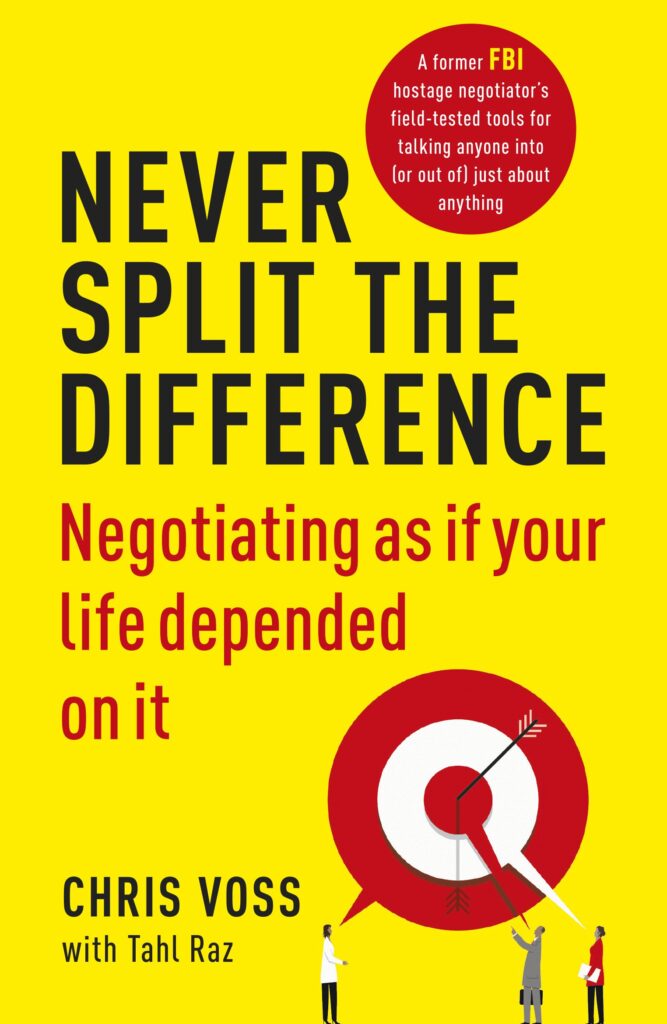Category: Negotiation
(6 von 100)
Why: I need this to negotiate my private relationship ;p
Goal: face a demanding negotiation, instead of turning away.
Action: Label their “Pain” by saying out it loud.
3 Key Concepts
- Get “that’s right”, not “You’re right”
- Empathizing is not enough, label their “pain”
- Be able to say “no”
Summary
There are common concepts in this book and “Getting to Yes” by Fisher and Ury. Even in a daily conversation, we should strive to understand counterpart. Moreover, the author suggests that we must also appeal externally that we are genuinely understood.
A logical person would try to find the effect and causation of the argument to persuade. This is not effective, because all you will get is “You are right”. Chris Voss argued that you should instead strive to get “That’s RIGHT!”. The catch is that you will need to see from their perspective and label their statement to them.
Additional to logical understanding, you must show psychological feeling understanding. One must label their “Pain”. Empathizing is not easily conveyed, as you have just a few minutes with them to exchange. It is far more effective to use the labeling technique. As each time you state their pain out loud, it satisfies their emotional needs.
Be able to say “no”. This is a classic concept applies to any type of negotiation. Therefore, Chris gave a guideline on how to get yourself prepared to go into a negotiation. He called this tool a “Negotiation One Sheet“ (Download Link). It is a compiled list with tricks and techniques.

Goal check: I learned key techniques that can be used in a hostile negotiation.
Wasu’s Review
( 4.0 / 5.0 )
Get this book on Amazon here!
Bonus: Get to “No”
Trying only to get a “Yes” (Ironically), will activate their defensive mechanism. Chris advised that you offer them a chance to negate your request or statement, to say “No”. It makes them feel safe, secure, and in control.
Use these leading questions at the beginning of the exchange to get “No”;
“Is now a bad time for you to … ?”
“Have you given up on the idea …?”

